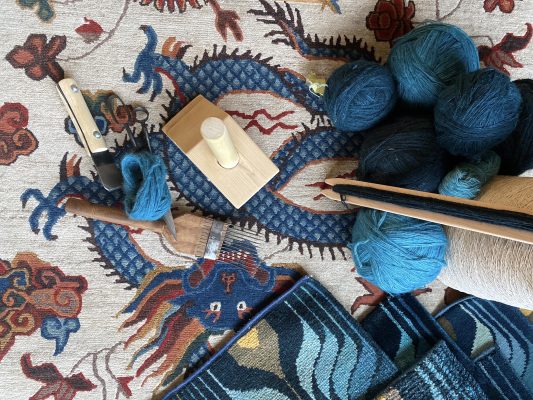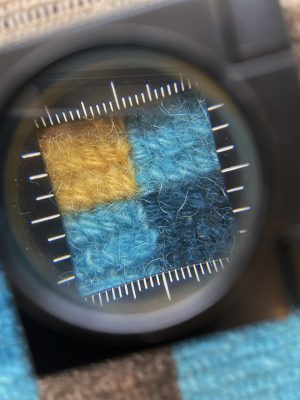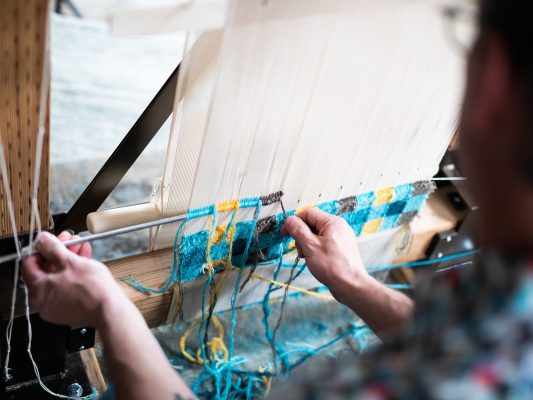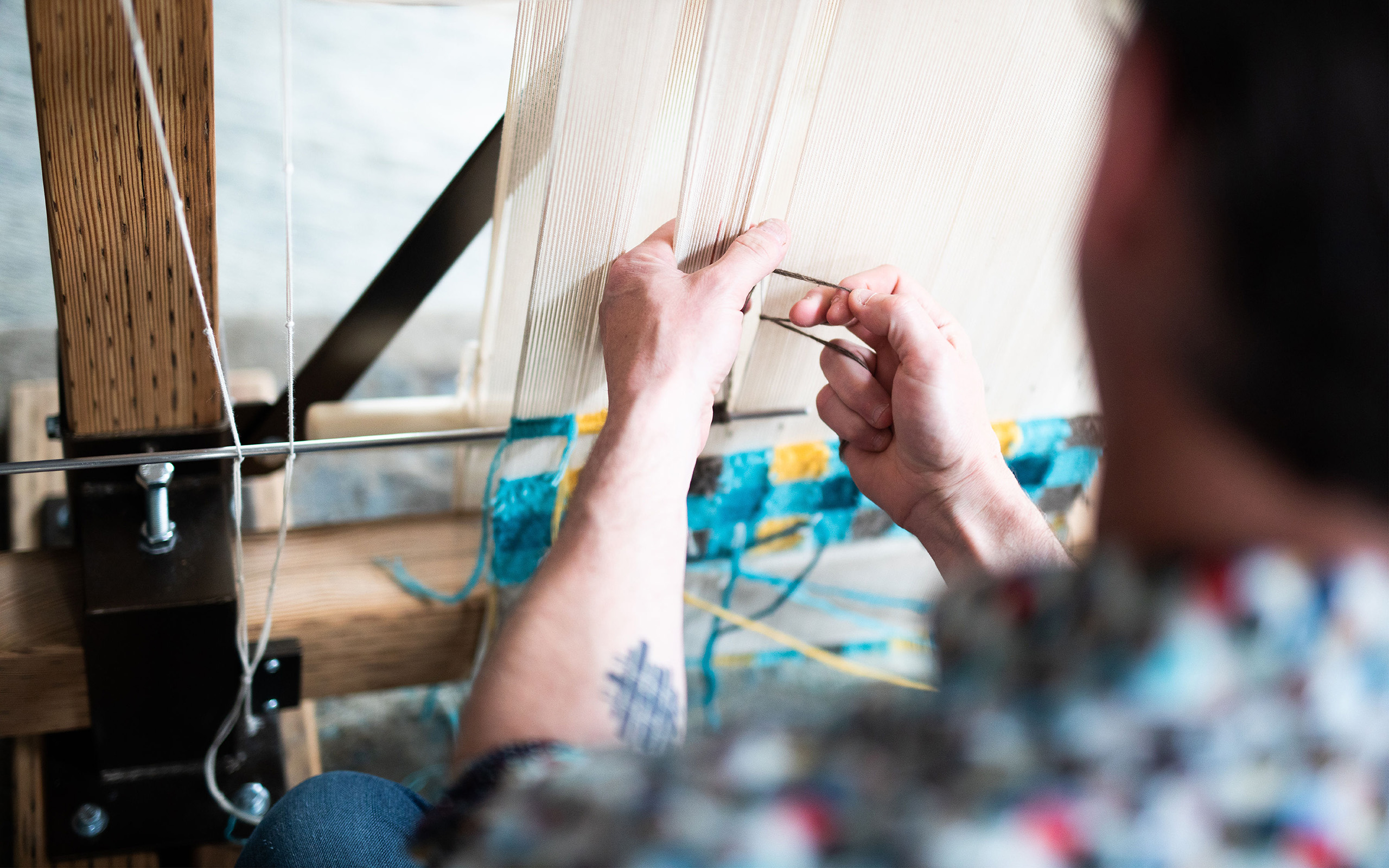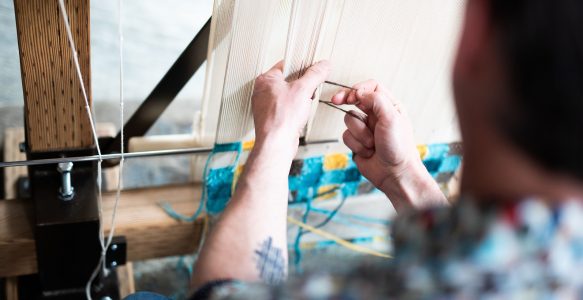The Nature of Weaving
It is one thing to explain the amount of handwërk required in the weaving, knotting, and crafting of a rug or carpet, it is another to see and interact with it in-person at a loom; this is the experience I offer via the live in-person presentation and hands-on demonstrations of the craft of carpetry*. While certainly tailored to your needs, The Nature of Weaving is typically focused on a cursory understanding of the mechanics of weaving, the aesthetics of drawn design interacting with canvas of warp and weft, and most importantly an appreciation of the human element of handwërk. Through presentation, demonstration, and interaction at the loom itself, participants come to appreciate the immense skill and time embodied in every handknotted rug and carpet; the latter element of time imbuing the metaphorical ‘soul’ of the carpet.
Primarily focused on the Tibetan style of weaving, other techniques can be explored and contrasted thus further illuminating the nature of the relationship between weaving structure and drawing as something far more than drawing applied to white canvas. The discussion further makes note of the importance of materiality as a critical element of the most beautiful, best quality handknotted carpets on the market.
While the handknotted carpet is most often viewed in toto as finished decorative object which adorns the floor, its crafting is a meticulous, if not also tedious process which brings order to the raw materials used in its creation. As such, The Nature of Weaving portrays accurately the handknotted or handcrafted carpet as more than instantaneously satisfying design, exploring the technical, philosophical, social, and artistic aspects of carpetry via live weaving demonstration and tactile sample review in order to reveal the intrinsic soul of hand weaving.
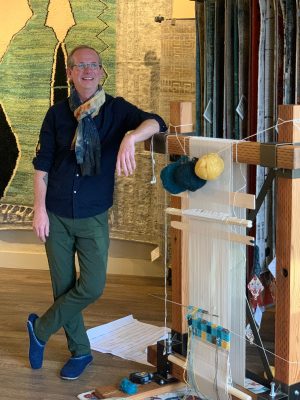
‘…Powerful…’
‘Having The Ruggist present at our showroom for a recent designer event was a powerful experience. His presentation skills and demonstration of the craft were extremely valuable to our local design trade. Being able to see first-hand the process of hand-knotting rugs, really helped drive home to our designers the importance of understanding the entire process of a rug’s evolution. This knowledge will help us all educate the end user to ensure the value of the hand-crafted rug remains important and sought after.’
Anna Augusto, Augusto Fine Rugs
Philosophy
The Sanskrit word ‘tantra,’ used today to describe an adherence to principles – rules if you will – originally meant: loom or weaving. And so it is that numerous scholars have argued throughout the centuries of the inextricable link between the order and structure of weaving and the order and structure of society. But for all its importance, and arguably beauty, in this era weaving is often overlooked by the casual observer. As a fundamental technology of human civilization, weaving has allowed humans to progress to our current zenith, yet owing to industrialization its practice is typically far removed from the lives of everyday people. As such, what personal experiences we may have with the craft are limited, often treating those who work as weavers in the abstract as though the requisite skills are esoteric and mystical. It is through this romantic, if not also distorting lens, that we speak of weaving as we attempt to convey the amount of handwërk, the amount of labour, the amount of metaphorical soul, involved in the crafting of handknotted rugs and carpets.
With necessary, essential, or utilitarian weaving having long ago been shifted to mechanized means of production, modern handweaving is almost exclusively – though not entirely – crafted for non-essential, which is to say, luxury consumption. Focused entirely on handwoven and handknotted carpets, this presentation further explore the modern relationship between weaving done by hand and its consumption in the luxury marketplace.
Throughout my career now spanning over a quarter century I have attempted to be honest and forthright with clientele regarding the amount of work in a handwërk carpet, likewise investing considerable amounts of my own time and effort since 2016 to work in the field in Nepal to better understand the craft and labour involved; but few people are so privileged – or frankly interested – in this deep dive into The Nature of Weaving. The more itinerate rug and carpet traders around the world may have sat and touristically attempted to tie a few (or more) knots, ever fewer however are the handfuls of people with the expertise, experience, and savoir faire to not only bring this craft to life before your very eyes, but explain it in a manner relevant to the modern Interior Designer, Architect, and consumer. This is what I offer in my weaving demonstration, The Nature of Weaving.
To inquire about booking a weaving demonstration please contact me via your preferred method of the available options.
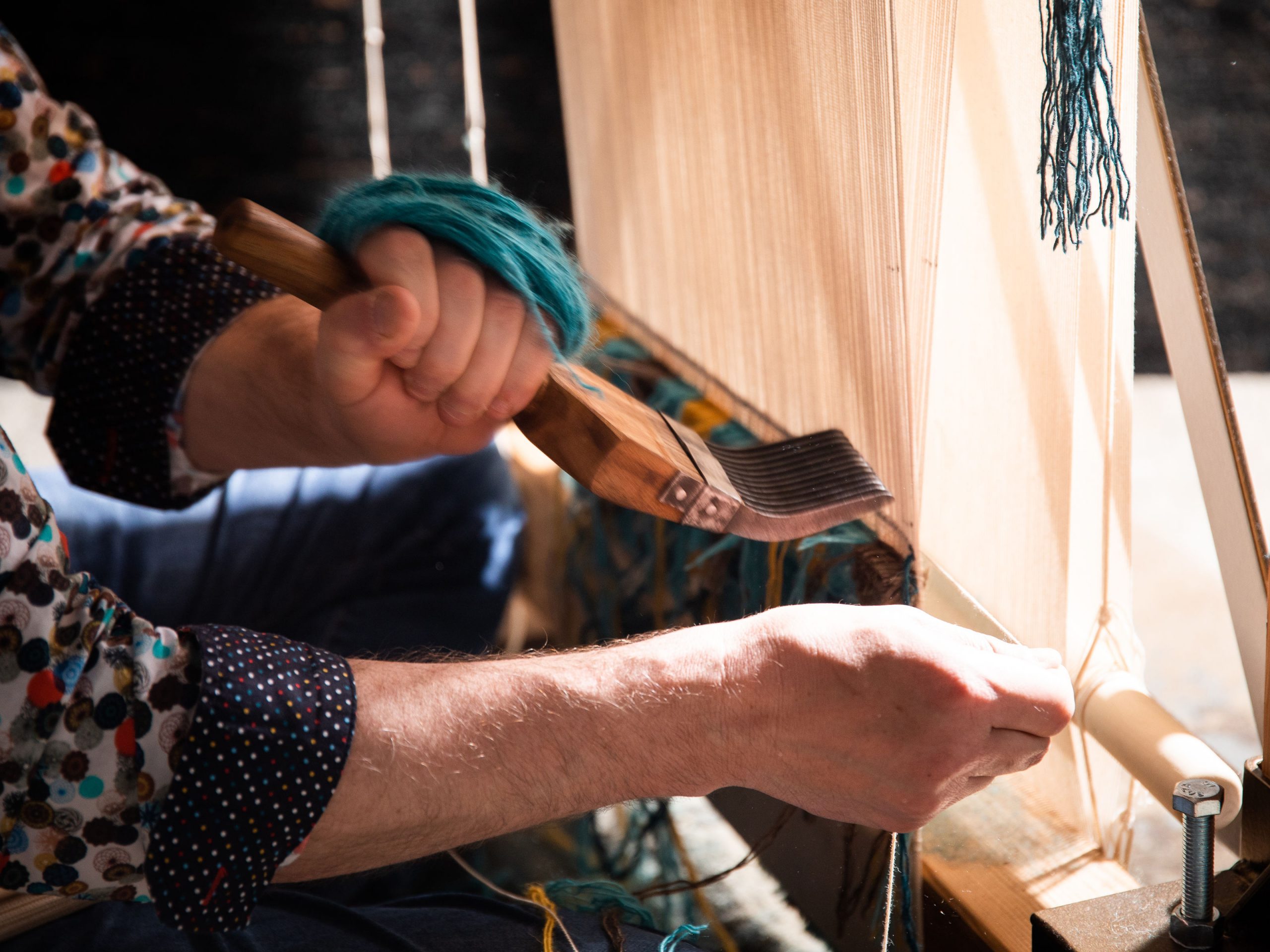
*Carpetry
While perhaps not in widespread standard usage, I prefer this term to describe the art and craft of carpet making. Overheard during the simultaneous English translation of a lecture presented in Turkish during Istanbul Carpet Week in 2016, the term encapsulates all aspects of carpet making, not just weaving.
*Handwërk
Handwërk is, as one might infer, simply handwork, which is to say fastidious craftwork and artistry done by manual labour … by hand. I choose to employ a non-standard spelling in English to remind that the world is vast, our perspectives unlimited, and that craft is universal.

